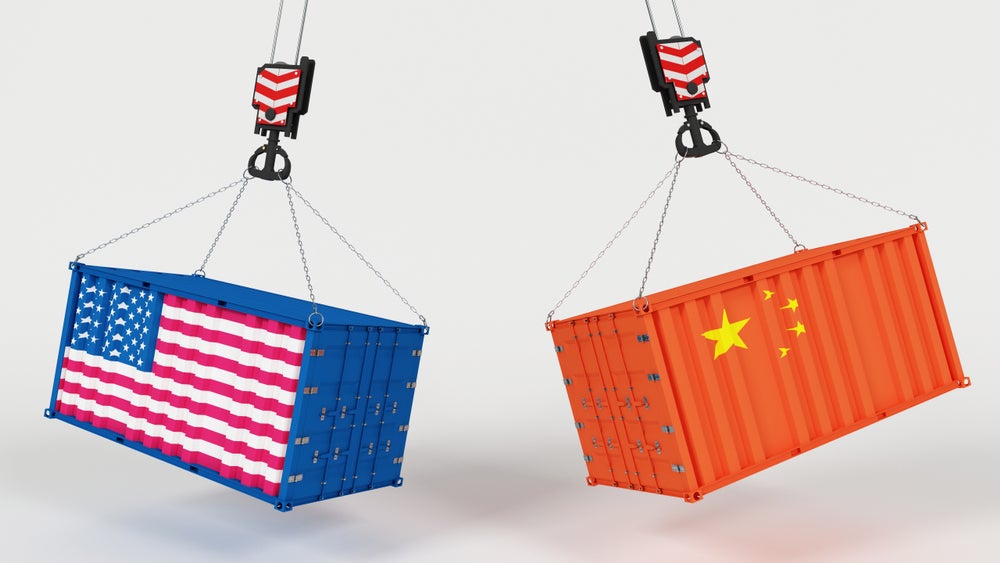
AI and its subset ML have a myriad of use cases within the mining industry, from cost optimisation to improving safety and sustainability.
One company making use of the technology in the sector is AVEVA. The industrial software provider employs AI solutions across the various industries in which it works and says these solutions allow its clients to “better detect current performance issues and better predict future ones, minimising risk of failure of critical assets and maximising operational performance”.
Fernanda Martins, Aveva’s industry marketing director, spoke to Mining Technology about the benefits AI offers mining companies, how companies have been using it and the challenges of integrating the technology.
Kris Cooper (KC): How is AI used within the mining industry to drive efficiency?
Fernanda Martins (FM): AI is helping to solve problems and generate value across the mining industry. The technology can be used to analyse vast quantities of operational and other data to provide advanced decision support. It can then interpret the findings from historical and real-time data into meaningful insights to be used in digital applications or direct guidance to the workforce.
In production, AI improves equipment management for higher efficiency – increasing productivity, throughput and quality. It can also help in ore/waste management identification, increasing recovery and reducing dilution.
How well do you really know your competitors?
Access the most comprehensive Company Profiles on the market, powered by GlobalData. Save hours of research. Gain competitive edge.

Thank you!
Your download email will arrive shortly
Not ready to buy yet? Download a free sample
We are confident about the unique quality of our Company Profiles. However, we want you to make the most beneficial decision for your business, so we offer a free sample that you can download by submitting the below form
By GlobalDataAI is helping geologists to improve processes for locating and delineating mineral resources. Improving the efficiency and accuracy of geological modelling, AI’s computer vision interprets geological information from drill cores. Advanced analytics and ML can bolster the process, increasing the likelihood of finding mineral deposits.
It can also be used as an industrial assistant, quickly gathering all the relevant information to solve a specific problem. Ultimately, it is helping to leverage intelligence from pit to port and empower a new generation of workers who need to replace predecessors who worked for 20 or 30 years in the same role.
KC: How is AI used to reduce costs in mining?
FM: AI can help mining companies optimise extraction and bring down operating costs. In maintenance, AI models based on ML help detect potential failures on critical equipment ahead of time. By anticipating issues, maintenance can be scheduled when the best resources are available, reducing the costs of the maintenance procedures, and preventing costly unplanned downtime and potential damage to important equipment.
Through being able to optimise the maintenance strategy, mining companies ensure the best efficiency of equipment, which leads to lower fuel consumption in some big machines, reducing costs.
KC: How is AI used to improve safety in mines?
FM: AI has a large role to play in improving the health and safety of mining. Fatigue monitoring, for example, helps to detect when operators may be falling asleep. AI can also detect when potentially unsafe conditions exist for workers around heavy mobile equipment. It can monitor, analyse and alert mining companies to environmental factors like dust levels so they can adjust operations and implement environmental protection measures.
Assisted by AI, autonomous vehicles can operate around the mines without a driver. Returning to the subject of critical equipment, by anticipating potential failures, mining companies prevent incidents that could lead to significant damage to the facilities, people and the environment. All of this helps increase productivity while improving safety.
KC: How is AI used to improve the sustainability of mining operations?
FM: To achieve success, mining companies face a two-pronged challenge: they must capitalise on new business opportunities while meeting environmental, social and governance and decarbonisation targets.
AI can help make informed decisions that optimise the entire mining process, helping companies meet production and sustainability goals. By using AI to improve equipment efficiency and safety, as mentioned before, mining companies have immediate benefits around sustainability. Less fuel consumption means lower CO₂ emissions, and better efficiency and process understanding (meaning better usage of natural resources like water), while better safety means no environmental damage.
KC: Which mining companies are using Aveva AI/ML technology? Are there any case studies you can share about the success of the integration of the technology?
FM: The first example is Quebec Iron Ore. The company is advancing with its digital road map by improving the reliability of critical assets and enhancing traceability from pit to port. With robust data management and ML models, Quebec Iron Ore improved asset health tracking of critical equipment, is getting early anomaly detection of potential operational failures, can identify the lack of instrumentation throughout the process and has created a solid base for business intelligence decisions.
ASARCO’s Ray Mine has avoided costly asset failures and downtime. The company moved from a tribal knowledge scenario to an integrated real-time decision-making platform. Adopting Aveva’s technology for data management and ML models, it can now proactively detect abnormal behaviour and prevent costly asset failures; avoid unplanned downtime and lost or reduced productivity; leverage root-cause analysis to prevent recurrence of issues; optimise operations in real time; increase profits and consistency; and improve the training and efficiency of operations teams.
Another two companies were able to quantify their benefits, with impressive results from improving operational data gathering and monitoring, and combining that with ML-based analytics models. Beyond improving safety and reliability, Norsk Hydro, a bauxite and aluminium producer, reported $4.7m (Nkr50.15m) in savings from reducing maintenance costs, while Nexa Resources, a zinc producer, reported a 75% reduction in unplanned downtime.
KC: What challenges have been encountered through integrating AI into the mining industry?
FM: The mining industry scenario becomes more complex. Mining companies need to adopt new technology to improve productivity and ensure product quality while minimising waste and overall environmental impact. AI can make an impact on all the current challenges, but companies will require a good level of instrumentation, automation and digitalisation.
Only with a reliable and robust data infrastructure can AI models be effective in industrial operations. It is time to connect IT with operational technology and engineering technology. While some big mining companies are advanced in terms of their digitalisation road map, others have a long way to go to improve the adoption of automation and digital technology before they are ready to take advantage of AI.







